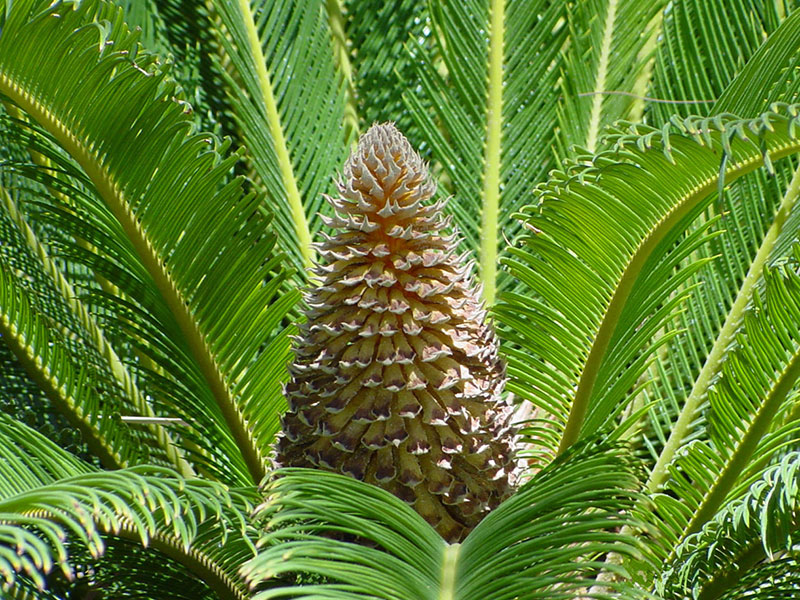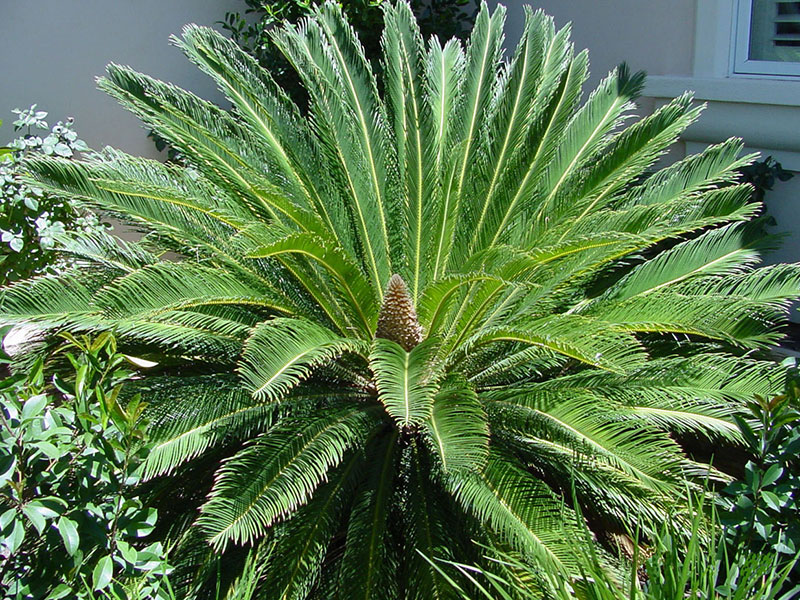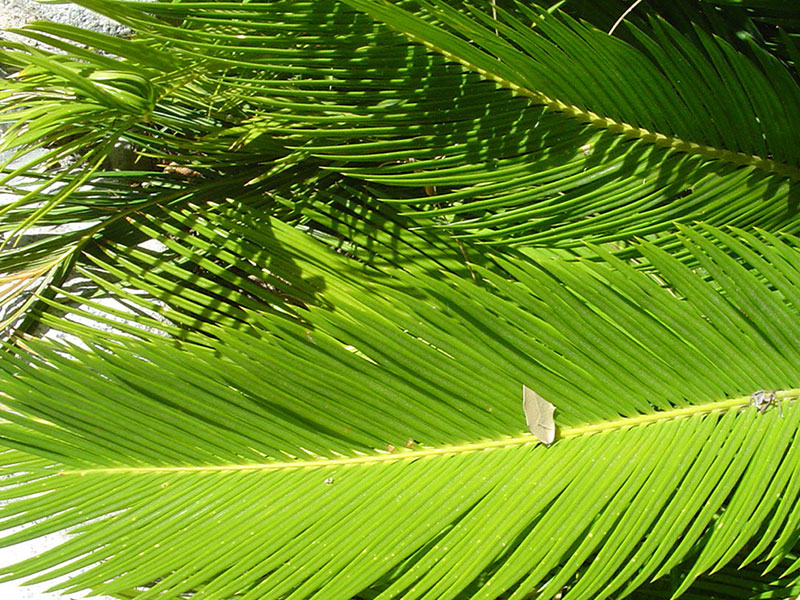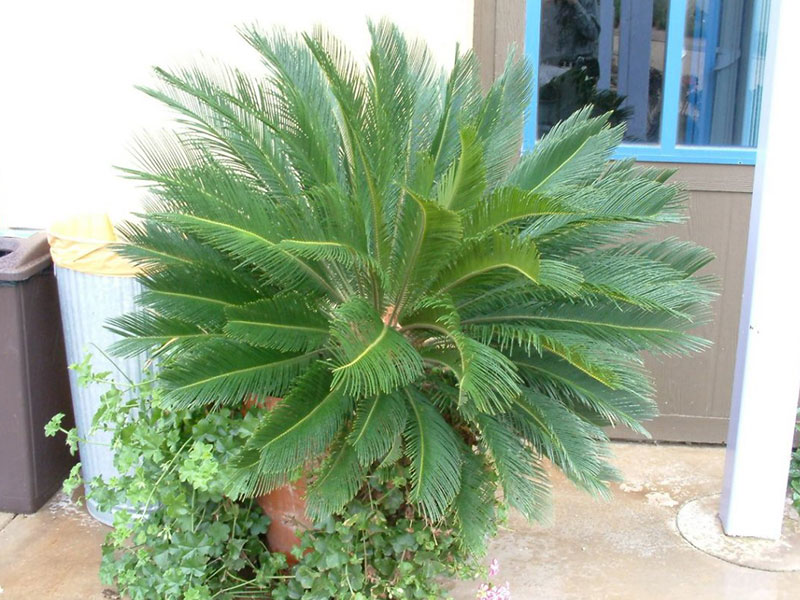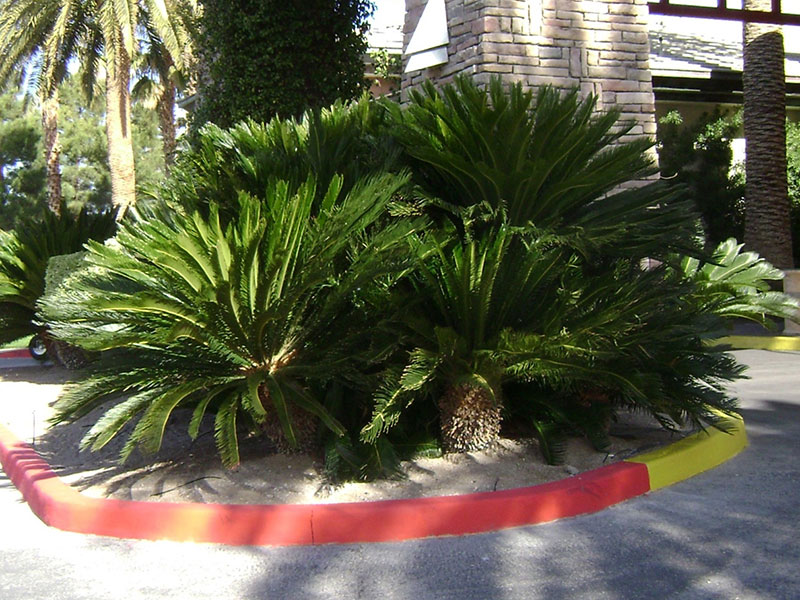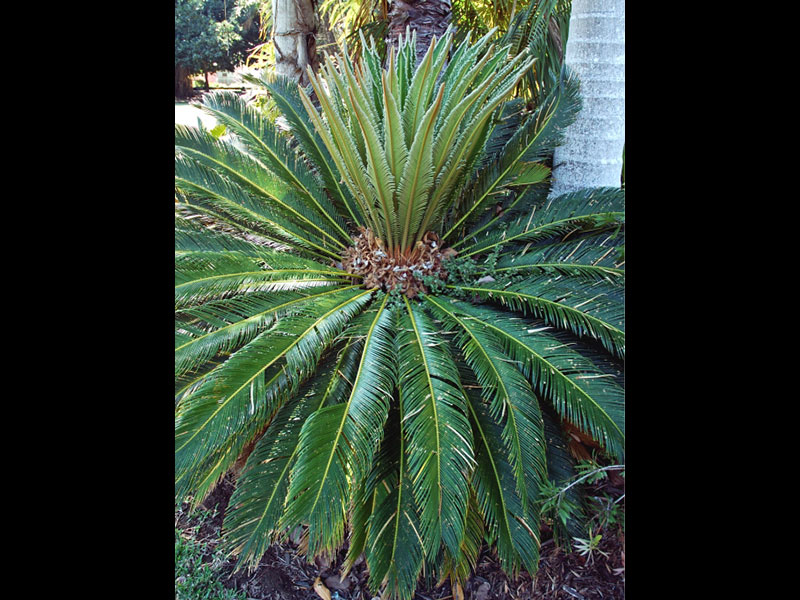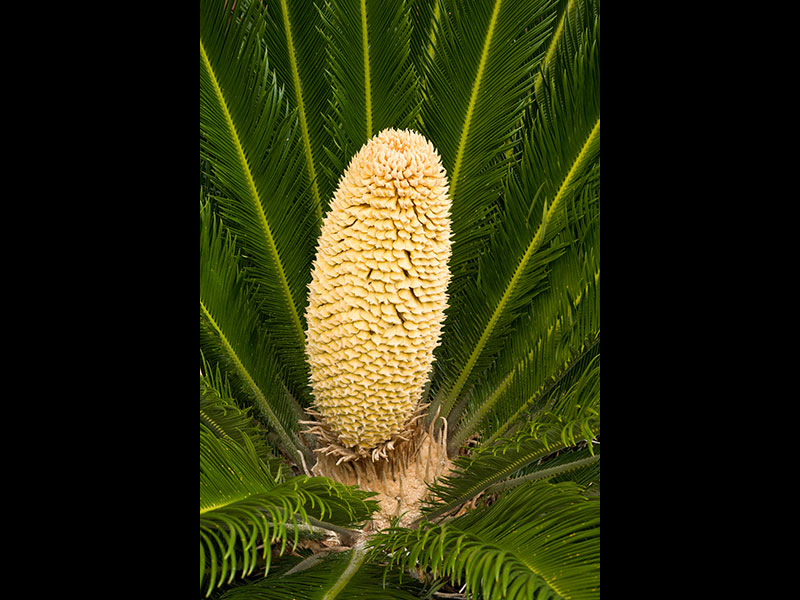Find plants
My list (0)
Sago Palm, Japanese Sago Palm
Cycas revoluta
Climate Resiliency
The Sago Palm is not a true palm but a cycad, an ancient species lower on the evolutionary scale than palms. Cycads are gymnosperms more closely related to conifers. It has been placed in this category because of its ability to store water in times of drought. Cycads are very adaptable and can grow in full sun but prefer some afternoon shade in hot desert climates. The stiff, glossy green crown usually produces one set of new leaves per year. The leaves may turn yellow from over fertilizing, over-watering or sunburn. Fertilize at half strength and provide excellent drainage. The offsets can be removed in spring, set aside to callus and then planted half way in soil and will eventually grow roots. A highly valued landscaping plant that is often used as a specimen, a Sago in Las Vegas was observed with 13 trunks, the tallest was 10 feet tall! Be aware that Sagos are extremely poisonous to animals and humans if ingested. All parts of the plant are toxic, however the seeds contain the highest level of the toxin cycsain. If any of the plant is ingested call a poison control center or doctor immediately.
- Plant type: Succulent
- Maintenance level: Low
- Water requirement: Medium, Low
- Sun exposure: Part Sun, Shade, Morning Sun
- Height range: 4–6 Feet
- Width range: 4–8 Feet
- Canopy value: 28 ft²
- Growth rate: Slow
- Seasonal habit: Evergreen
- Fruit color: Brown
- General foliage color: Green
- Design style: Pool Friendly, Thorns/Spines
- Hardiness cold tolerance: 15 °F
- Soil preference: Well Drained
- Native location: Southern Japan to Java
- Sunset zones: 8, 9, 10, 11, 12, 13, 14, 15, 16, 17, 18, 19, 20, 21, 22, 23, 24, H1, H2
- USDA hardiness zone: 8b, 9a, 9b, 10a, 10b, 11a, 11b
New Search
